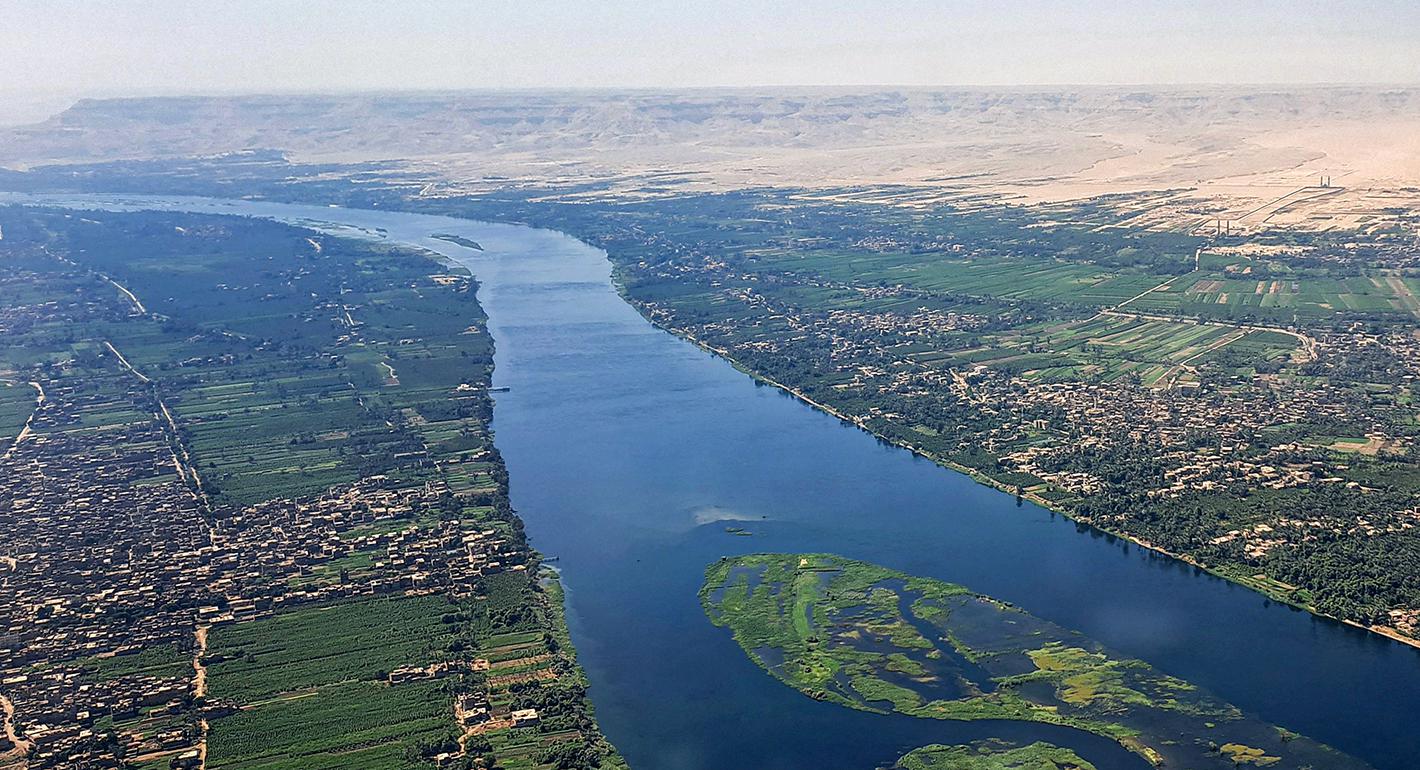Project Report: Africa-China Climate Adaptation Knowledge Exchange
Webinar Series on Climate-Resilient Infrastructure
A series of online webinars has been organized by the Global Center on Adaptation China Office (GCA China), in partnership with the Environmental Development Center (EDC) of the Ministry of Ecology and Environment and the National Center for Climate Change Strategy and International Cooperation (NCSC). This initiative is a core component of the Africa-China Knowledge Exchange project, designed to integrate climate resilience into critical infrastructure. The collaboration directly supports Sustainable Development Goal 17 (Partnerships for the Goals) by fostering a South-South cooperation framework to address shared global challenges.
Webinar II: Resilient Transport Infrastructure and Sustainable Development
The second webinar, titled “Resilient Transport: Opportunities and Challenges for Climate-Adapted Transport Infrastructure in China and Africa,” addresses the urgent need for robust transportation systems in the face of climate change. The session’s focus aligns with several key SDGs, primarily SDG 9 (Industry, Innovation, and Infrastructure) and SDG 11 (Sustainable Cities and Communities).
The discussions are centered on enhancing the resilience of transport and railway infrastructure as both China and Africa experience rapid urbanization and intensifying climate risks. This directly contributes to Target 9.1, which calls for developing quality, reliable, sustainable, and resilient infrastructure, and Target 11.5, aimed at significantly reducing the impact of disasters on urban populations.
Core Thematic Areas and SDG Alignment
The webinar is structured to explore critical challenges and opportunities, with each theme contributing to the broader climate adaptation agenda as outlined in SDG 13 (Climate Action).
- Climate Risk Assessment: Examining the vulnerabilities of urban and regional transport networks—including railways, roads, and transit hubs—to extreme weather events such as floods, heatwaves, and storms. This analysis is fundamental to strengthening resilience and adaptive capacity as per Target 13.1.
- Innovative Adaptation Practices: Highlighting advanced practices and policy instruments for climate-resilient design, ensuring that new and existing infrastructure can withstand future climate scenarios.
- Smart and Green Mobility: Investigating the role of smart transport systems and green mobility solutions in creating sustainable and efficient urban environments, contributing to Target 11.2 on providing access to safe, affordable, accessible, and sustainable transport systems for all.
Objectives and Multi-Stakeholder Collaboration
The primary objectives of the session are to facilitate a multi-stakeholder dialogue and identify actionable pathways for collaboration, reinforcing the principles of SDG 17.
- Foster Knowledge Exchange: To create a platform for urban planners, transport engineers, technology enterprises, financial institutions, and railway authorities from China and Africa to share expertise and successful case studies.
- Identify Collaborative Directions: To jointly define potential areas for cooperation at the intersection of resilient transport infrastructure and climate adaptation.
- Promote Integrated Solutions: To encourage the adoption of holistic approaches that combine engineering, policy, technology, and finance to achieve climate resilience.
Dissemination of Findings
To ensure the long-term impact and accessibility of the knowledge shared, the key findings and outcomes from the webinar series will be consolidated. A comprehensive report or a series of articles will be produced and published on the official website, serving as a valuable resource for all interested stakeholders committed to advancing the Sustainable Development Goals.
1. Which SDGs are addressed or connected to the issues highlighted in the article?
-
SDG 9: Industry, Innovation and Infrastructure
The article’s central theme is developing “climate-adapted transport infrastructure” and enhancing the “resilience of their transport and railway infrastructure.” This directly relates to building resilient infrastructure, a core component of SDG 9.
-
SDG 11: Sustainable Cities and Communities
The webinar focuses on how “cities and regions in China and Africa can enhance the resilience of their transport” systems. It addresses urban challenges like “rapid urbanization” and making urban transport networks resilient to climate risks, which is a key aspect of SDG 11.
-
SDG 13: Climate Action
The entire initiative is framed around climate adaptation. The article explicitly mentions “integrating climate resilience into infrastructure,” adapting to “intensifying climate risks,” and dealing with “extreme weather events such as floods, heatwaves, and storms,” all of which are central to SDG 13.
-
SDG 17: Partnerships for the Goals
The event is a “China-Africa Knowledge Exchange” organized by multiple entities (GCA China, EDC, NCSC). It aims to bring together diverse stakeholders like “urban planners, transport engineers, technology enterprises, financial institutions, and railway authorities” to foster collaboration, which embodies the spirit of SDG 17.
2. What specific targets under those SDGs can be identified based on the article’s content?
-
SDG 9: Industry, Innovation and Infrastructure
- Target 9.1: “Develop quality, reliable, sustainable and resilient infrastructure, including regional and transborder infrastructure, to support economic development and human well-being, with a focus on affordable and equitable access for all.” The article’s focus on creating “resilient transport” and “climate-adapted transport infrastructure in China and Africa” directly supports this target.
- Target 9.4: “By 2030, upgrade infrastructure and retrofit industries to make them sustainable, with increased resource-use efficiency and greater adoption of clean and environmentally sound technologies and industrial processes…” The mention of “innovative practices,” “smart transport systems,” and “green mobility solutions” aligns with this target’s goal of upgrading infrastructure with sustainable and clean technologies.
-
SDG 11: Sustainable Cities and Communities
- Target 11.2: “By 2030, provide access to safe, affordable, accessible and sustainable transport systems for all…” The discussion on “resilient transport,” “smart transport systems,” and “green mobility solutions” for cities and regions directly contributes to creating sustainable transport systems.
- Target 11.5: “By 2030, significantly reduce the number of deaths and the number of people affected and substantially decrease the direct economic losses… caused by disasters, including water-related disasters…” The article’s aim to enhance infrastructure resilience against “extreme weather events such as floods, heatwaves, and storms” is a direct measure to mitigate the impact of climate-related disasters on urban populations and economies.
- Target 11.b: “By 2020, substantially increase the number of cities and human settlements adopting and implementing integrated policies and plans towards… mitigation and adaptation to climate change, resilience to disasters…” The webinar’s objective to share “innovative practices and policy instruments related to climate-resilient design” supports the implementation of integrated plans for climate adaptation and resilience in cities.
-
SDG 13: Climate Action
- Target 13.1: “Strengthen resilience and adaptive capacity to climate-related hazards and natural disasters in all countries.” The core purpose of the webinar, to “enhance the resilience of their transport and railway infrastructure in the face of… intensifying climate risks,” is a direct reflection of this target.
-
SDG 17: Partnerships for the Goals
- Target 17.6: “Enhance North-South, South-South and triangular regional and international cooperation on and access to science, technology and innovation…” The “Africa–China climate adaptation knowledge exchange” is a clear example of South-South cooperation focused on sharing knowledge and innovative practices.
- Target 17.9: “Enhance international support for implementing effective and targeted capacity-building in developing countries…” The webinar series, which aims to share knowledge and best practices, serves as a capacity-building initiative for stakeholders in China and Africa.
- Target 17.16: “Enhance the global partnership for sustainable development, complemented by multi-stakeholder partnerships…” The event’s structure, which invites “urban planners, transport engineers, technology enterprises, financial institutions, and railway authorities” to “jointly discuss potential areas and directions for collaboration,” is a model of a multi-stakeholder partnership.
3. Are there any indicators mentioned or implied in the article that can be used to measure progress towards the identified targets?
While the article does not mention specific quantitative indicators, it implies several qualitative and activity-based indicators for measuring progress:
- Indicator for Partnership and Knowledge Sharing: The number and nature of collaborative events held, such as the “three online webinars.” The publication of a “report or a series of articles” serves as a tangible output and an indicator of knowledge consolidation and dissemination (relevant to SDG 17).
- Indicator for Policy Integration: The discussion and adoption of “policy instruments related to climate-resilient design” can be tracked as an indicator of progress towards integrating climate adaptation into national and urban planning (relevant to SDG 11.b).
- Indicator for Infrastructure Resilience: The article implies a need to measure the impact of “extreme weather events such as floods, heatwaves, and storms” on transport networks. Therefore, a reduction in transport disruptions or damage from such events following the implementation of resilient designs would be a key indicator of progress (relevant to SDG 9.1 and 11.5).
- Indicator for Technology Adoption: The implementation of “smart transport systems” and “green mobility solutions” in transport projects in China and Africa would be a direct indicator of the adoption of innovative and sustainable technologies (relevant to SDG 9.4).
4. Table of SDGs, Targets, and Indicators
| SDGs | Targets | Indicators Identified in Article |
|---|---|---|
| SDG 9: Industry, Innovation and Infrastructure | 9.1: Develop quality, reliable, sustainable and resilient infrastructure. 9.4: Upgrade infrastructure to make them sustainable and adopt clean technologies. |
– Development of “climate-adapted transport infrastructure.” – Implementation of “smart transport systems” and “green mobility solutions.” |
| SDG 11: Sustainable Cities and Communities | 11.2: Provide access to safe, affordable, accessible and sustainable transport systems. 11.5: Reduce economic losses and people affected by disasters. 11.b: Increase the number of cities implementing integrated policies for climate adaptation and resilience. |
– Enhanced resilience of urban transport networks to “floods, heatwaves, and storms.” – Adoption of “policy instruments related to climate-resilient design.” |
| SDG 13: Climate Action | 13.1: Strengthen resilience and adaptive capacity to climate-related hazards. | – Integration of “climate resilience into infrastructure.” |
| SDG 17: Partnerships for the Goals | 17.6: Enhance South-South cooperation on science, technology and innovation. 17.9: Enhance international support for capacity-building. 17.16: Enhance multi-stakeholder partnerships. |
– The “Africa–China climate adaptation knowledge exchange” webinar series. – Collaboration between diverse stakeholders (planners, engineers, financial institutions, etc.). – Publication of a “report or a series of articles” as a knowledge resource. |
Source: gca.org







